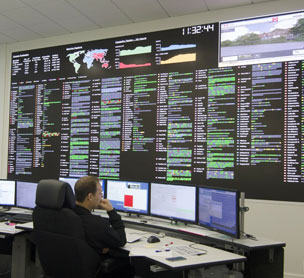Blog Details
What are the common issues related to LED walls and how could these problems be solved?

- Posted On 31 Oct 2024
#rentalledScreen #advertisingleddisplay #outdoorledscreenkochi #ledvideowall #leddisplay #leddisplayscreen #leddancefloor #toprentalledscreen #8x12ledwallsindia #8x12ledwallschennai #ledweddingstage #fixedledscreenkochi #videoledwallstamilnadu #LedwallKerala #topgproseries #bestledscreenmanufacturers #ledwallsupplierBanglore #advertisingleddisplay #videowallmanufactures #P3ledwallsmanufactures #bestP3ledwalls #ledscreenservice #topvideoledwalls #indoorledvideowall #outdoorledwall #outdoorledwallkochi #ledwallsupplierHyderabad #leddisplaymanufacturescalicut #ledvideowallcalicut #ledwallKochi
What are the common issues related to LED walls and how could these problems be solved?
LED walls are popular for bright displays and high versatility in advertising, events, and large presentations. However, like any complex technology, LED walls can have a range of issues over their operational lifetime. Knowing the common challenges and how to address them ensures you get the best performance and longevity from your LED wall. Below, we cover the typical problems users face and practical solutions to fix them.
1. Dead or Stuck Pixels
Problem: The most apparent problem associated with LED walls is dead or stuck pixels. Dead pixels do not light up at all, while dark spots appear. Stuck pixels may stay on the same color and can thus ruin the overall visual uniformity.
Solution:
Pixel Repair Software: In a few cases, pixel repair software can detect and reset stuck pixels.
Manual Resetting: Sometimes, you can just gently press the affected area with a soft cloth to reset the stuck pixel.
Module Replacement: If the damage is more serious or even dead pixels, the most permanent solution would be the replacement of the faulty module or panel.
2. Color Inconsistencies
Problem: Color inconsistency will result in an uneven brightness or mismatched hue across the LED wall. This is mainly due to aging LEDs, panel calibration differences, or variations in the quality of the components used in the LEDs.
Solution:
Calibration Software: Regular software calibration helps balance the color output across the display.
Routine Maintenance: Scheduled maintenance checks for and replaces aging LEDs, ensuring consistent color performance.
Quality Components: Proper quality LED panels with balanced manufacture reduce color variation.
3. Screen Flicker
Problem: Screen flickers are a problem faced in most displays due to fluctuations in power supply, poor cabling, and defective control. This affects both the viewer and indicates electric problem.
Solution:
Verify Power Supply: The power supply needs to stable enough for the requirements of the LED wall. Unstability in power supply can be eradicated by using a voltage regulator.
Test Cables and Connectors: The flickering problem comes due to loose or faulty wires. All the connections are tested and tightened for overcoming the problem.
Upgrade Controls: The old control system itself causes synchronism issues. A latest controller would make stability better
4. Synchronization Problems
Problem: Lags in video or audio behind the LED display that causes disjointed flow in presentations or events. It may be due to compatibility issues of software, poor network connection, or old systems.
Solution:
Update the Software: Install the latest firmware or display management software to solve compatibility issues.
Optimize Network Performance: For LED walls that have a network connection, low latency and enough bandwidth for the network.
Professional Installation: Employ professionals to install the display controller for proper synchronization.
5. Overheating
Problem: LED walls can overheat and lose their performance, life span, and even suffer hardware failure. This problem occurs mostly due to inadequate ventilation or continuous high-brightness use.
Solution:
Ventilation: Ensure that the installation location is well ventilated and additional fans or air conditioning installed if necessary.
Brightness Controls: Toning for low peak hour usage saves energy and avoids overheating.
Temperature Control: Thermometers check and regulate the temperature inside the LED screens.
6. Water Damage
Issue: Waterproof damages are now threatening the outdoor LED walls. Water dripping into the system causes elements to malfunction, rust, or completely fail a display.
End
Waterproof Enclosures: Ensure the installation of LED walls with a sufficient IP rating, like those rated at IP65 and above, in outdoor environments.
Seal Maintenance: Check and maintain seals and enclosures for preventing the entrance of water.
Emergency Repairs: In case water entry is reported, switch off the unit at once and have a professional repair service inspect and correct the condition at the earliest.
7. Screen Blackouts
Issue: A general blackout, where parts of the LED wall or the entire display fails to work, is alarming. It could be due to problems in power supply, control system faults, or damaged LED panels.
Solution:
Power supply check: The power supply must be in good condition and must provide a stable voltage to the system.
System Restart: Sometimes, the controls can be solved by simple system restart.
Module Replacement: If modules in certain areas malfunction, the malfunctioning modules could be replaced in order to regain functionality.
Despite the technical savvy, led walls sometimes may have all kinds of problems that can affect performance. Knowing common problems and solutions keeps the functionality and the visual quality of your displays for years to come. Maintaining them regularly with professional calibration and controls of the environment ensure that issues don't arise or get properly addressed, keeping your led wall in great performance.
